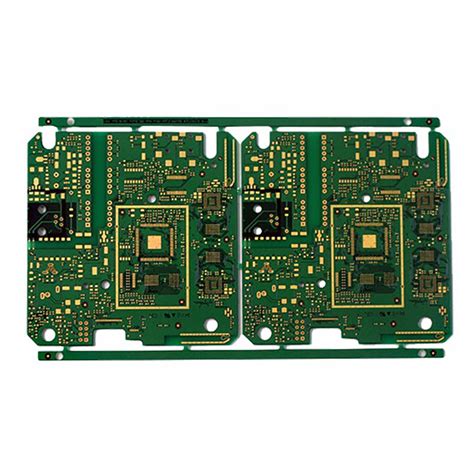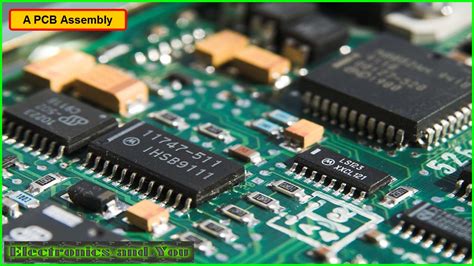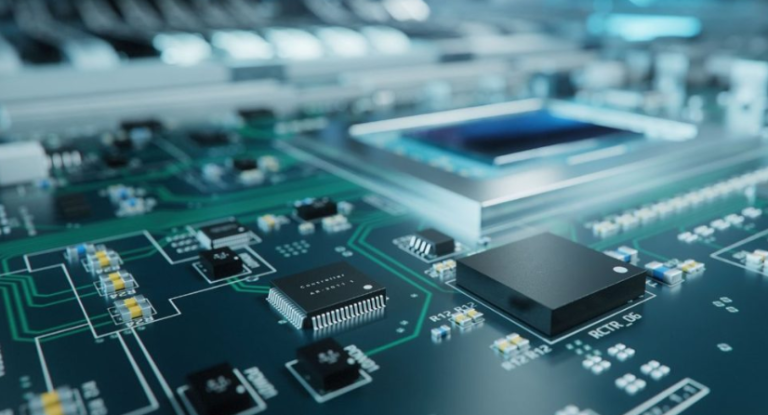Gold plating rogers 4003c pcb
Benefits Of Gold Plating On Rogers 4003C PCB
Gold plating on Rogers 4003C PCBs offers a multitude of benefits that significantly enhance the performance and reliability of electronic devices. As the demand for high-frequency applications continues to rise, the need for materials that can support such requirements becomes increasingly critical.
Rogers 4003C, a high-frequency laminate, is renowned for its excellent electrical properties, making it a preferred choice for RF and microwave circuits. When combined with gold plating, the advantages are further amplified, providing a robust solution for modern electronic challenges.
One of the primary benefits of gold plating on Rogers 4003C PCBs is the enhancement of conductivity.
Gold, being an excellent conductor, ensures minimal signal loss, which is crucial for high-frequency applications. This superior conductivity is particularly beneficial in environments where signal integrity is paramount, such as in telecommunications and aerospace industries. By reducing resistance, gold plating helps maintain the integrity of the signal, thereby improving the overall performance of the device.
In addition to improved conductivity, gold plating offers exceptional corrosion resistance.
Unlike other metals that may oxidize over time, gold remains stable and does not tarnish. This property is especially important in harsh environments where exposure to moisture and other corrosive elements is inevitable. By protecting the underlying copper traces on the Rogers 4003C PCB, gold plating extends the lifespan of the circuit board, ensuring long-term reliability and reducing the need for frequent maintenance or replacements.
Moreover, gold plating enhances the solderability of the PCB.
The smooth and non-reactive surface of gold allows for easier and more reliable soldering processes. This is particularly advantageous during the assembly phase, where precision and efficiency are crucial. The improved solderability not only facilitates better connections but also reduces the risk of defects, such as cold joints or bridging, which can compromise the functionality of the device.
Transitioning to another significant advantage, gold plating on Rogers 4003C PCBs also contributes to thermal management.
Gold’s excellent thermal conductivity aids in the efficient dissipation of heat, which is vital for maintaining optimal operating temperatures in high-performance applications. This thermal management capability helps prevent overheating, thereby safeguarding the components and ensuring consistent performance even under demanding conditions.
Furthermore, the use of gold plating can enhance the mechanical durability of the PCB.
Gold’s inherent malleability allows it to withstand mechanical stresses without cracking or flaking. This durability is essential in applications where the PCB may be subject to vibrations or physical impacts, such as in automotive or industrial settings. By providing a robust protective layer, gold plating helps preserve the structural integrity of the Rogers 4003C PCB.
In conclusion, the benefits of gold plating on Rogers 4003C PCBs are manifold, ranging from improved conductivity and corrosion resistance to enhanced solderability and thermal management. These advantages make gold-plated Rogers 4003C PCBs an ideal choice for high-frequency and high-reliability applications. As technology continues to advance, the integration of such materials and processes will undoubtedly play a pivotal role in meeting the ever-evolving demands of the electronics industry.

Gold Plating Techniques For Rogers 4003C PCB
Gold plating is a critical process in the manufacturing of Rogers 4003C PCBs, offering numerous benefits that enhance the performance and longevity of these high-frequency circuit boards. Rogers 4003C is a popular substrate material known for its excellent electrical properties, making it ideal for applications in RF and microwave circuits. The addition of gold plating to this substrate further elevates its capabilities, providing superior conductivity, corrosion resistance, and reliability.
To begin with, gold plating on Rogers 4003C PCBs is primarily employed to improve electrical conductivity.
Gold, being an excellent conductor, ensures minimal signal loss, which is crucial for high-frequency applications. This is particularly important in RF and microwave circuits where even slight signal degradation can lead to significant performance issues. By applying a thin layer of gold over the copper traces, manufacturers can achieve a low-resistance path for electrical signals, thereby enhancing the overall efficiency of the circuit.
Moreover, gold plating offers exceptional corrosion resistance, which is vital for the durability of Rogers 4003C PCBs.
Unlike other metals, gold does not oxidize or tarnish over time, ensuring that the PCB maintains its integrity even in harsh environmental conditions. This resistance to corrosion is especially beneficial in applications where the circuit board is exposed to moisture, chemicals, or extreme temperatures. Consequently, gold-plated Rogers 4003C PCBs are often preferred in aerospace, military, and telecommunications industries where reliability is paramount.
In addition to conductivity and corrosion resistance, gold plating also facilitates better solderability.
The smooth and non-reactive surface of gold allows for easier and more reliable soldering of components onto the PCB. This is particularly advantageous during the assembly process, as it reduces the likelihood of defects such as poor solder joints or bridging. Furthermore, the use of gold plating can extend the shelf life of the PCB, as it prevents the formation of oxides that can hinder solderability over time.
There are several techniques employed in the gold plating process for Rogers 4003C PCBs, each with its own set of advantages.
One common method is electroplating, where an electric current is used to deposit a thin layer of gold onto the copper surface. This technique allows for precise control over the thickness of the gold layer, ensuring uniform coverage across the PCB. Another method is electroless plating, which involves a chemical reaction to deposit gold without the need for an electric current. Electroless plating is particularly useful for achieving uniform coverage on complex geometries and through-holes.
While gold plating offers numerous benefits, it is important to consider the cost implications.
Gold is a precious metal, and its use can significantly increase the manufacturing cost of the PCB. Therefore, manufacturers must carefully balance the performance benefits against the cost to ensure that the final product meets both technical and budgetary requirements.
In conclusion, gold plating is an invaluable technique for enhancing the performance and reliability of Rogers 4003C PCBs. By providing superior conductivity, corrosion resistance, and solderability, gold plating ensures that these high-frequency circuit boards can meet the demanding requirements of various advanced applications. As technology continues to evolve, the role of gold plating in PCB manufacturing is likely to become even more significant, driving further innovations in the field.

Comparing Gold Plating With Other Finishes On Rogers 4003C PCB
When considering the optimal finish for Rogers 4003C PCBs, gold plating emerges as a prominent option due to its unique properties and advantages. However, to make an informed decision, it is essential to compare gold plating with other available finishes, such as HASL (Hot Air Solder Leveling), ENIG (Electroless Nickel Immersion Gold), and OSP (Organic Solderability Preservatives). Each finish offers distinct benefits and limitations, which can significantly impact the performance and cost-effectiveness of the final product.
Gold plating is renowned for its excellent conductivity and resistance to oxidation, making it a preferred choice for high-frequency applications and environments where reliability is paramount.
The thin layer of gold provides a smooth, flat surface, which is particularly beneficial for fine-pitch components and surface mount technology. Moreover, gold’s inert nature ensures long-term durability, reducing the risk of corrosion and maintaining signal integrity over time. However, the cost of gold plating can be a significant consideration, as gold is a precious metal, and its application can increase the overall expense of PCB manufacturing.
In contrast, HASL is a more economical option, widely used for its simplicity and cost-effectiveness.
This finish involves coating the PCB with a layer of molten solder, which is then leveled using hot air. While HASL provides good solderability and is relatively inexpensive, it may not be suitable for all applications. The uneven surface created by the solder can pose challenges for fine-pitch components, and the lead content in traditional HASL finishes raises environmental and health concerns. Lead-free HASL is available, but it may still not match the performance of gold plating in terms of surface smoothness and oxidation resistance.
ENIG, another popular finish, offers a middle ground between cost and performance.
It involves depositing a layer of nickel followed by a thin layer of gold, providing excellent surface planarity and good solderability. ENIG is highly resistant to oxidation and is suitable for complex and high-density PCBs. However, it is not without its drawbacks. The process can be more expensive than HASL, and there is a risk of “black pad” defects, which can compromise the reliability of solder joints. Despite these concerns, ENIG remains a widely used finish due to its balance of cost, performance, and reliability.
OSP, on the other hand, is an organic finish that provides a protective layer over the copper pads.
It is an environmentally friendly option and is cost-effective compared to metal-based finishes. OSP offers good solderability for a limited time, making it suitable for PCBs that will be assembled shortly after fabrication. However, its lack of long-term durability and susceptibility to damage during handling can be significant drawbacks, especially for applications requiring extended shelf life or exposure to harsh environments.
In conclusion, the choice of finish for Rogers 4003C PCBs should be guided by the specific requirements of the application. Gold plating stands out for its superior conductivity and durability, making it ideal for high-performance and high-reliability applications. However, the cost implications must be carefully weighed against the benefits. Other finishes like HASL, ENIG, and OSP offer viable alternatives, each with its own set of advantages and limitations. By understanding these differences, manufacturers can select the most appropriate finish to meet their technical and budgetary needs.

Cost-Effectiveness Of Gold Plating Rogers 4003C PCB
Gold plating Rogers 4003C PCBs is a process that has garnered attention for its potential to enhance the performance and longevity of printed circuit boards. However, the cost-effectiveness of this process is a critical consideration for manufacturers and designers alike. To understand the financial implications, it is essential to explore the benefits and drawbacks of gold plating in the context of Rogers 4003C PCBs, a material known for its excellent high-frequency performance and low dielectric loss.
Initially, gold plating is often perceived as an expensive option due to the high cost of gold itself.
However, when evaluating cost-effectiveness, one must consider the long-term benefits that gold plating can offer. Gold is highly resistant to oxidation and corrosion, which significantly enhances the durability and reliability of the PCB. This resistance is particularly advantageous in harsh environments where other materials might degrade more rapidly. Consequently, the longevity of gold-plated PCBs can lead to reduced maintenance costs and fewer replacements over time, which can offset the initial investment.
Moreover, gold plating provides excellent electrical conductivity, which is crucial for high-frequency applications.
Rogers 4003C is already favored for its superior performance in such applications, and gold plating can further enhance this by ensuring minimal signal loss and maintaining signal integrity. This is particularly important in industries such as telecommunications and aerospace, where even minor signal degradation can lead to significant issues. Therefore, the improved performance can justify the additional cost, especially in applications where reliability and efficiency are paramount.
In addition to performance benefits, gold plating can also facilitate easier soldering processes.
The smooth and non-reactive surface of gold allows for better solderability, reducing the risk of defects during assembly. This can lead to higher yields and lower production costs, as fewer boards are likely to be rejected due to soldering issues. Furthermore, the ease of soldering can also translate into faster production times, which can be a critical factor in meeting tight deadlines and maintaining competitive advantage.
However, it is important to weigh these benefits against the potential drawbacks.
The primary concern with gold plating is the cost of the material itself, which can be prohibitive for some projects, particularly those with tight budget constraints. Additionally, the process of gold plating requires specialized equipment and expertise, which can further increase production costs. For some applications, the benefits of gold plating may not justify these additional expenses, especially if the operating environment does not demand the enhanced durability and performance that gold provides.
In conclusion, the cost-effectiveness of gold plating Rogers 4003C PCBs is highly dependent on the specific requirements of the application. While the initial costs may be higher, the long-term benefits in terms of durability, performance, and ease of manufacturing can make it a worthwhile investment for certain industries. By carefully considering the operating environment and performance needs, manufacturers can make informed decisions about whether gold plating is the most economically viable option for their PCBs. Ultimately, the decision should balance the upfront costs with the potential savings and performance enhancements over the lifespan of the product.






